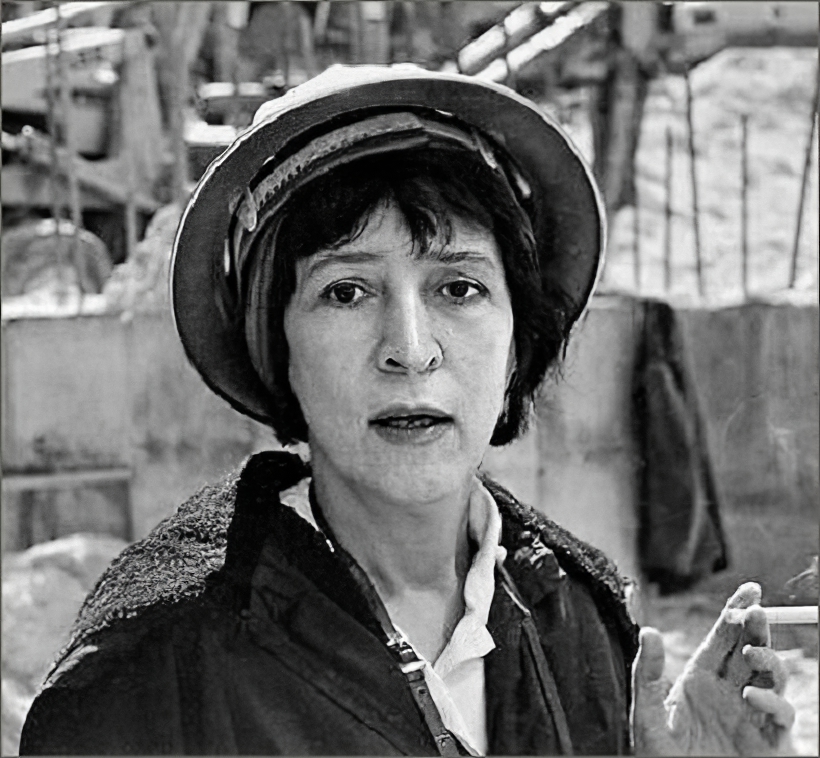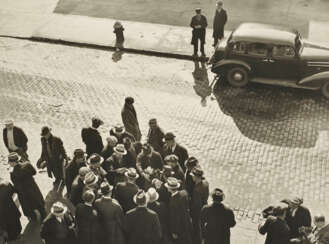откровенная фотография



William Eggleston is an American photographer. He is widely credited with increasing recognition for color photography as a legitimate artistic medium. Eggleston's books include William Eggleston's Guide (1976) and The Democratic Forest (1989).


Karl Struss was an American photographer and a cinematographer of the 1900s through the 1950s. He was also one of the earliest pioneers of 3-D films. While he mostly worked on films, such as F.W. Murnau's Sunrise: A Song of Two Humans and Charlie Chaplin's The Great Dictator and Limelight, he was also one of the cinematographers for the television series Broken Arrow and photographed 19 episodes of My Friend Flicka.


Helen Levitt was an American photographer known for her street photography of New York City. Levitt began taking photographs as a teenager and went on to work for the photo agency, the Photo League, in the 1930s and 1940s.
Levitt's work focused on capturing the daily lives of ordinary people, particularly children, in the neighborhoods of New York City. She used a small 35mm camera to take candid shots of children playing in the streets, creating images that were both playful and poignant. Her work was often compared to the work of fellow street photographers, such as Henri Cartier-Bresson and Walker Evans.
In addition to her photography, Levitt also worked as a filmmaker and created several acclaimed documentaries.
Levitt's photographs have been exhibited in major museums around the world, including the Museum of Modern Art in New York and the San Francisco Museum of Modern Art. She was awarded numerous honors for her work, including a Guggenheim Fellowship and a National Endowment for the Arts Grant.


Jeff Wall is a renowned Canadian artist, celebrated for his large-scale backlit Cibachrome photographs and insightful art history writings. His artistic journey began in the late 1970s, creating images that balance between painting and photography, often resembling movie stills in their complexity and narrative depth. Wall's unique approach involves elaborate setups with actors, sets, and post-production, akin to single-frame movies, leading to works that demand viewers' attention similar to paintings or films.
His seminal piece, "Picture for Women" (1979), reflects his deep engagement with art history, referencing Édouard Manet's "A Bar at the Folies-Bergère" and exploring themes like the male gaze within a contemporary context. Another notable work, "A Sudden Gust of Wind (after Hokusai)" (1993), showcases Wall's digital montage technique, combining numerous photographs to create a seamless image that reimagines a 19th-century Japanese print in a modern setting.
Jeff Wall's transition to using digital technology in the 1990s allowed him to merge various negatives into a coherent whole, pushing the boundaries of traditional photography. His works, often displayed as transparencies on lightboxes, introduce a novel way of experiencing photographic art, blending narrative depth with meticulous attention to detail.
For art collectors and experts, Jeff Wall's work represents a profound intersection of photography, cinema, and painting, offering a rich field for exploration and appreciation. His pieces, found in major museums and galleries worldwide, continue to influence and inspire discussions in the realms of art and photography.
Stay updated on new exhibitions, sales, and auctions related to Jeff Wall by subscribing to updates, ensuring you're informed about the latest developments and opportunities related to this influential artist.



Larry Sultan was an American photographer and artist. He is known for his innovative and evocative photographic work that often explores the boundaries between documentary photography and staged narrative.
Sultan's work is characterized by his interest in the relationships between people and their environments, and he often incorporates everyday settings and objects into his photographs. He is perhaps best known for his seminal work, "Pictures from Home," which is a deeply personal exploration of his own family and their suburban life in Southern California.
Sultan's work has been exhibited in galleries and museums around the world, and he has received numerous awards and accolades for his contributions to the field of photography. He was also a highly respected teacher, and he taught photography at the California College of the Arts and other institutions for many years.
Sultan's legacy as an artist and photographer continues to influence new generations of artists. His innovative techniques and unique approach to photography have had a significant impact on the field of documentary photography, and his work remains an important contribution to the history of photography.


William Eggleston is an American photographer. He is widely credited with increasing recognition for color photography as a legitimate artistic medium. Eggleston's books include William Eggleston's Guide (1976) and The Democratic Forest (1989).



Mitchell Epstein is an American fine-art photographer, among the first to make significant use of color.
Epstein's work has been exhibited and published extensively in the United States and Europe, and collected by numerous major museums, including New York's Museum of Modern Art and Whitney Museum of American Art, The J. Paul Getty Museum in Los Angeles, the San Francisco Museum of Modern Art, and the Tate Modern in London.


Karl Struss was an American photographer and a cinematographer of the 1900s through the 1950s. He was also one of the earliest pioneers of 3-D films. While he mostly worked on films, such as F.W. Murnau's Sunrise: A Song of Two Humans and Charlie Chaplin's The Great Dictator and Limelight, he was also one of the cinematographers for the television series Broken Arrow and photographed 19 episodes of My Friend Flicka.


Edward Burtynsky is a Canadian photographer and artist known for his large format photographs of industrial landscapes. His works depict locations from around the world that represent the increasing development of industrialization and its impacts on nature and the human existence. It is most often connected to the philosophical concept of the sublime, a trait established by the grand scale of the work he creates, though they are equally disturbing in the way they reveal the context of rapid industrialization.


Robert Frank was a Swiss photographer and documentary filmmaker, who became an American binational. His most notable work, the 1958 book titled The Americans, earned Frank comparisons to a modern-day de Tocqueville for his fresh and nuanced outsider's view of American society. Critic Sean O'Hagan, writing in The Guardian in 2014, said The Americans "changed the nature of photography, what it could say and how it could say it. it remains perhaps the most influential photography book of the 20th century." Frank later expanded into film and video and experimented with manipulating photographs and photomontage.


Alfred Stieglitz was an American photographer and modern art promoter who was instrumental over his 50-year career in making photography an accepted art form. In addition to his photography, Stieglitz was known for the New York art galleries that he ran in the early part of the 20th century, where he introduced many avant-garde European artists to the U.S. He was married to painter Georgia O'Keeffe.


Alfred Eisenstaedt was a German-born American photographer and photojournalist. He is best known for his work as a staff photographer for Life magazine, where he captured iconic images of celebrities, politicians, and everyday people.
Eisenstaedt began his career as a photographer in Germany, working for the Pacific and Atlantic Photos agency in Berlin in the 1920s. He emigrated to the United States in 1935 and joined the staff of Life magazine in 1936, where he remained until the magazine ceased publication in 1972.
Eisenstaedt's images are notable for their candid, spontaneous feel and their ability to capture the essence of his subjects. He is perhaps best known for his photograph "V-J Day in Times Square," which depicts a sailor kissing a nurse in celebration of the end of World War II. The image has become one of the most iconic photographs of the 20th century.
Throughout his career, Eisenstaedt photographed many of the most famous and influential people of his time, including Marilyn Monroe, Albert Einstein, Winston Churchill, and John F. Kennedy. His work has been exhibited in major museums around the world, and he received numerous awards and honors for his contributions to the field of photography.


Alfred Eisenstaedt was a German-born American photographer and photojournalist. He is best known for his work as a staff photographer for Life magazine, where he captured iconic images of celebrities, politicians, and everyday people.
Eisenstaedt began his career as a photographer in Germany, working for the Pacific and Atlantic Photos agency in Berlin in the 1920s. He emigrated to the United States in 1935 and joined the staff of Life magazine in 1936, where he remained until the magazine ceased publication in 1972.
Eisenstaedt's images are notable for their candid, spontaneous feel and their ability to capture the essence of his subjects. He is perhaps best known for his photograph "V-J Day in Times Square," which depicts a sailor kissing a nurse in celebration of the end of World War II. The image has become one of the most iconic photographs of the 20th century.
Throughout his career, Eisenstaedt photographed many of the most famous and influential people of his time, including Marilyn Monroe, Albert Einstein, Winston Churchill, and John F. Kennedy. His work has been exhibited in major museums around the world, and he received numerous awards and honors for his contributions to the field of photography.

































































